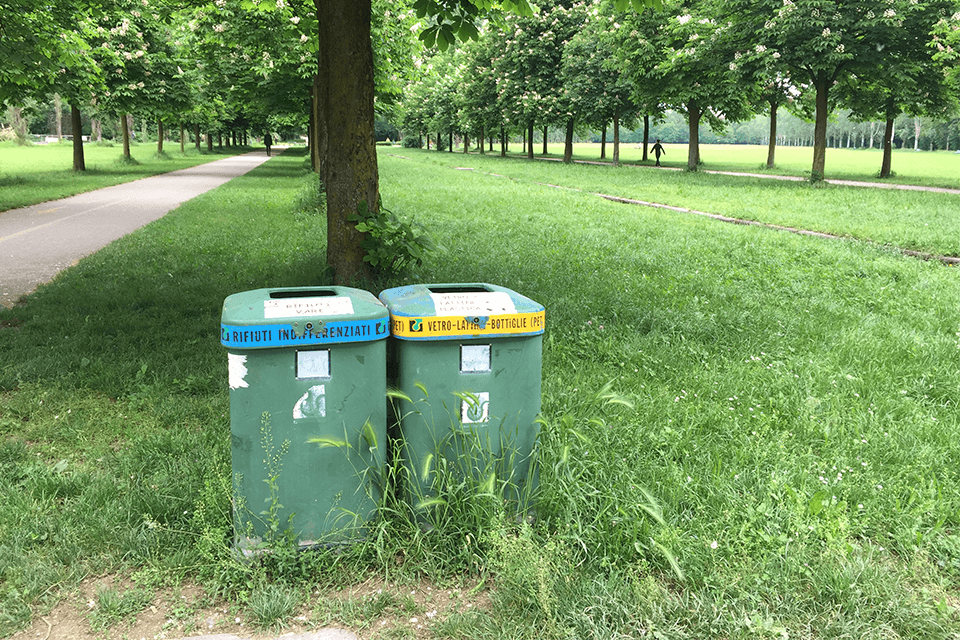Among the environmental projects collateral to waste collection, we find the road maintenance. In this case, the wearable RFID is a simple tool for certifying that the street bins and other furniture have been emptied.
In the city, the regular emptying of the street bins for waste collection is a particularly important necessity for cleanliness and public decorum. The same requirement concerns public parks, where maintenance and decorum are fundamental so that citizens can enjoy the green spaces.
Just like the benches, drains, road signs, street lights, parking obstacles, games in the parks, advertising hoardings and other street furniture, the waste bins are municipally owned assets: a series of questions are connected with emptying them, such as you read in the list below.
The emptying of waste bins
♦ Urban Decorum
In particularly popular tourist locations, the high number of visitors means that the containers are always full, despite the bag being replaced two or three times a day. A similar problem also affects big cities and large parks.
♦ Check of the operator’s compliance with the requirements in the tender
If the waste bins always seem full, the municipal authority, on one hand, needs to check that the collection operator complies with the agreements made in the tender, and the operator, on the other hand, must be able to demonstrate that it has completed its work.
♦ Planning the census and locating the street furniture
Municipalities – in particular those spread over a large area – often do not know the precise number of urban furniture items in their area and where they are located. A census of municipal assets is indispensable for carrying out proper maintenance.
RFID technology to certify that maintenance has been carried out
The wearable RFID devices for the pay as you throw waste collection system, which read the tags on the bags or bins, allow maintenance operations on items of street furniture to be certified, in this case the emptying of the street bins.
How does the process take place?
The RFID tag is affixed to the bin in a position where it cannot be read from outside, but only when the bag in it is taken out. The operator puts on the wearable device, opens the bin, removes the full bag, reads the RFID tag, recording the position of the device, and puts the clean bag in. This way, the tagged items are identified and geolocalized; as they are emptied gradually, the operator thus creates a geolocalized database of the containers, allowing the municipal authority to carry out a census of the bins in its area; the tags collected during reading with RFID technology are, in fact, sent to the municipal management, which processes them and prepares reports and analyses.
The wearable device is the ideal tool for carrying out this operation, because:
- It is light and easy to use;
- It is an agile and flexible tool, capable of adapting to the features of the area and road conditions. Unlike the fixed antenna mounted on the collection truck for reading the RFID tag – which cannot go through historic centres, with their lanes and alleys, pedestrian areas, public parks, inclines or the more impracticable roads –, the device worn by the operator is not tied to the vehicle and, thus, manages to adapt to any urban context.
The advantages of the process
Monitoring the maintenance of the waste bins by means of RFID technology has a series of advantages:
♦ Cleaner cities
Certifying that the street bin has been emptied means that the municipality can keep the process under control and get the operator to observe the terms of the tender, with positive results for civic decorum and the public parks.
♦ Dispute-proof certain data
If the municipal authority, on one hand, thanks to the data provided by reading the RFID tag, is sure that the collection operator has carried out the work properly, the operator has in his hands proof of having carried out the service, certain data that is indisputable.
♦ Possibility of drawing up an inventory of the municipal assets
The process can be applied to monitor the maintenance operations for other items of street furniture, allowing the authorities to localize them, carry out a census and draw up an inventory of the municipal assets.


